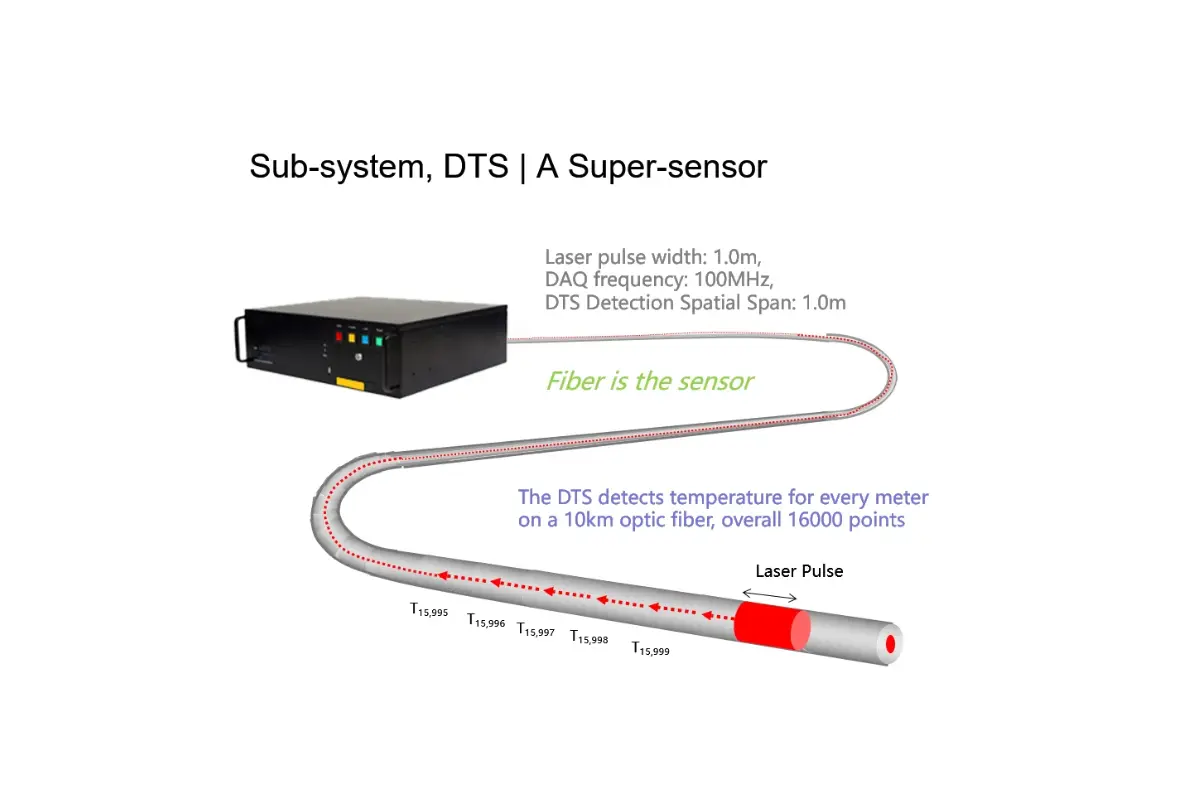Distributed Temperature Sensing (DTS) systems are more accurate, reliable, and cost-effective than traditional fire detection methods. They are also more versatile and can be used in a wider range of applications.
Let’s understand what DTS is?
DTS – Distributed Temperature Sensing is a technology that allows for the continuous measurement of temperature along the length of an optical fiber. The system consists of a laser that sends light pulses down an optical fiber. The light is scattered back to the laser, and the time it takes for the light to return is used to calculate the temperature at that point along the fiber.
How DTS Works
DTS systems can be used to monitor the temperature of a wide range of objects and environments. They are particularly well-suited for monitoring the temperature of Infrastructure Projects – tunnels, railways, Metro’s, Road Tunnels, also appropriate for Industrial settings – Conveyor Belts, Power Cable monitoring, GIS Substations, RSS & LILO, Cable Galleries and Cable cellar rooms, Furnace monitoring etc.
Benefits of DTS
DTS systems offer a number of benefits over traditional fire detection methods. These benefits include:
- Accuracy: DTS systems are extremely accurate and can detect temperature changes of as low as +1°C.
- Reliability: DTS systems are very reliable and can operate in harsh environments.
- Cost-effectiveness: DTS systems are more cost-effective than traditional fire detection methods, especially over the long term.
- Versatility: DTS systems can be used in a wide range of applications, including fire detection, process monitoring, and structural health monitoring.
- Early Warning: DTS systems can provide early warning of fires, giving the respective authority people to take precautionary measures.
Lets understand with an example,
DTS systems can actively monitor the temperature of tunnels and stations, detecting potential hotspots that may lead to fires. The system is programmed with specific temperature thresholds. These thresholds can be customized based on the type of environment being monitored (e.g., tunnels, railways, bridges) and the materials involved.
The DTS system continuously measures the temperature along the optical fiber. If the measured temperature exceeds the set threshold, the system immediately triggers an alarm. This alarm can be visual, and audible. If DTS is integrated with FACP- Fire Alarm Control Panel, then the Fire can be controlled through the associated systems- Water Mist / Sprinkler systems.
DTS Innovation
DTS is a relatively new technology, but it has already made a significant impact on the fire detection industry. DTS systems are becoming more accurate, reliable, and cost-effective. They are also becoming more versatile and can be used in a wider range of applications.
Importance of DTS for India
DTS is an important technology for India. India has a large population and a growing economy, which means that there is a need for safe and reliable infrastructure. DTS systems can help to ensure the safety of India’s infrastructure, including tunnels, railways, highways, and bridges.
Conclusion
DTS systems are revolutionizing the way fire detection is done. DTS systems are an important technology for India and can help to ensure the safety of India’s infrastructure.


